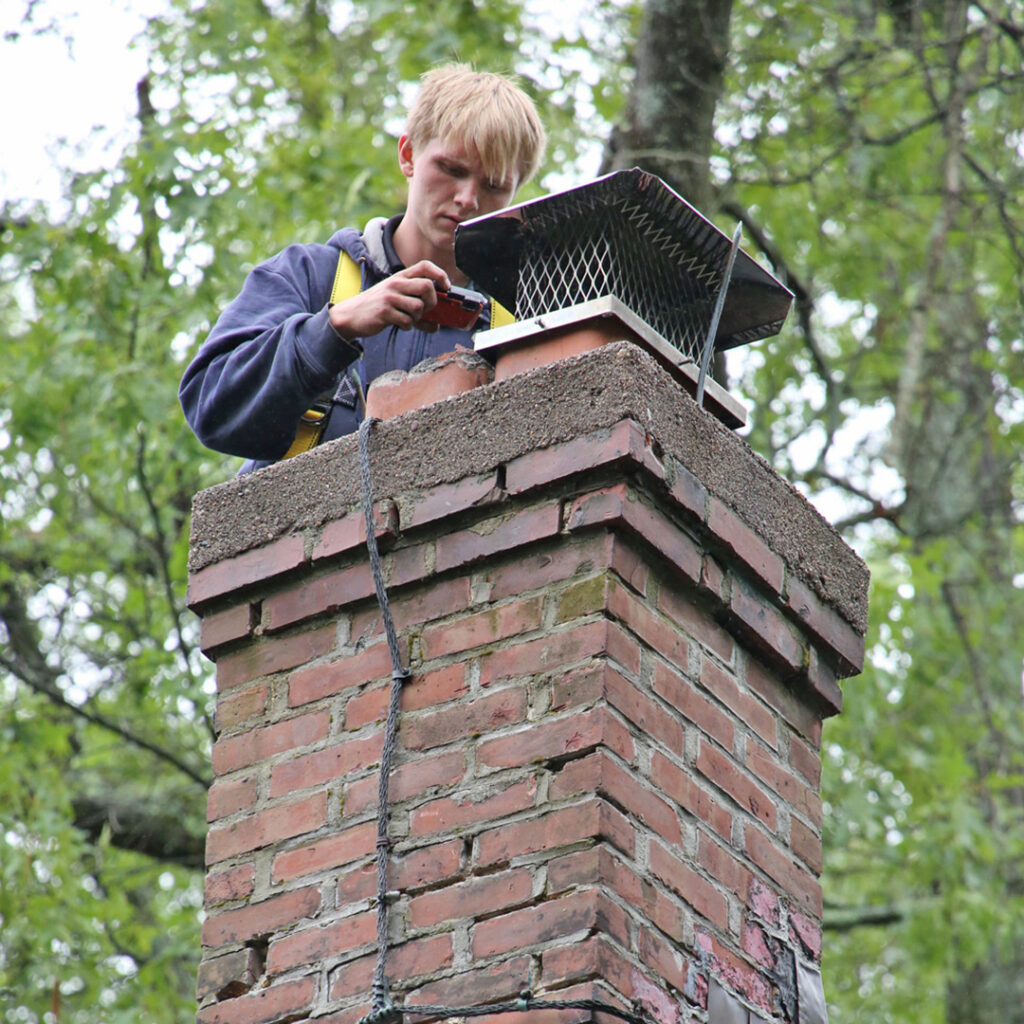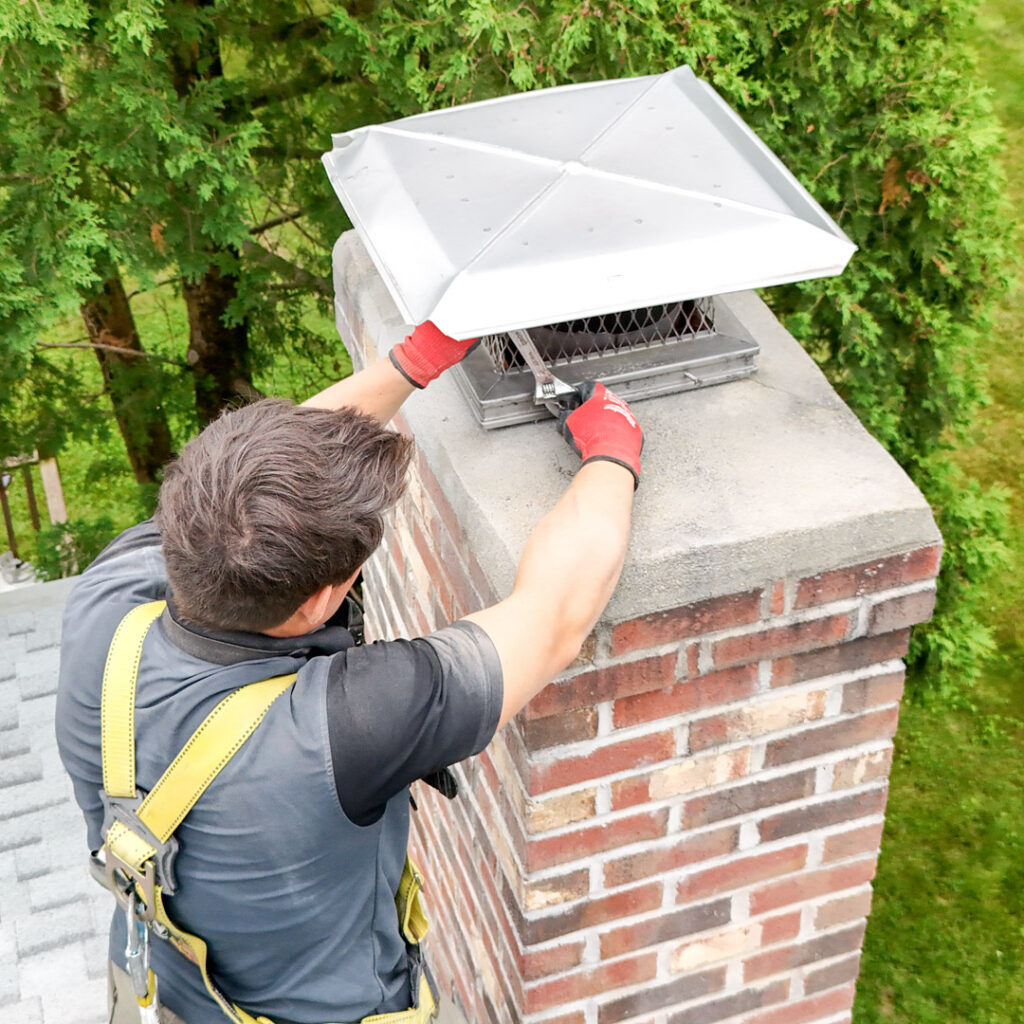Caps vs. Crowns vs. Covers
If you’ve ever had a chimney inspection or looked into getting repairs done, you’ve probably heard the terms chimney cap, chimney crown, and chimney cover thrown around like everyone is on the same page. And we get it—most homeowners aren’t chimney nerds (that’s our job). But understanding the difference between these three parts of the chimney can save you a whole lot of trouble—and money down the road.
Let’s break this topic down in plain English.
 The Chimney Cap: Your First Line of Defense
The Chimney Cap: Your First Line of Defense
Think of the chimney cap like a little roof for the top of the chimney. It usually sits over the stove and is typically made of stainless steel or copper.
What does it do?
- Keeps rain out of the flue.
- Stops critters like birds, raccoons, and squirrels from turning your chimney into a condo.
- Blocks debris like leaves and twigs from falling in.
- Some caps have spark guards to prevent hot embers from shooting out and landing on the roof.
Why it matters
Water is the number one enemy of your chimney. A cap stops water from going straight down the flue and causing damage to your fireplace or stove—and prevents expensive issues like rusted dampers or mold buildup.
The Crown: The Unsung Hero
If you move your eyes a little lower from the cap, you’ll see a flat, cement-like structure around the top of the chimney. That’s the chimney crown.
What does it do?
- Shields water away from the brickwork and flue liner.
- Helps protect the masonry from cracking, crumbling, and deteriorating.
Why it matters
A damaged or poorly built crown can lead to serious water damage (remember that water is a chimney’s primary enemy). Cracks in the crown allow water to seep in, which freezes and expands during cold weather, known as the freeze/thaw cycle. This constant freezing and thawing will eventually destroy your chimney from the top down. A good crown is sloped to send water away and sealed to keep it out.
The Chimney Cover: Isn’t That The Same as a Cap?
Not quite, but many people confuse the two and use the terms interchangeably, and to be fair, they can be similar. But here’s the scoop: a chimney cover usually refers to something that covers the entire top of the chimney, not just the flue. They’re commonly used in a factory-built chimney. It may have sides with vents to allow smoke out while keeping everything else (rain, animals, debris) from getting in. These are sometimes called full-coverage chimney caps.
Why would you need one?
- More complete protection for the entire chimney top.
- Extra defense against wind-driven rain
- They look neat and polished and can improve your home’s curb appeal.
So, Which One Do You Need?
Here’s the short version:
- The cap protects the flue itself.
- The crown is the concrete surface that seals the top of the chimney’s structure.
- The cover is a larger version of the cap that protects the whole top of the chimney and is usually used with factory-built chimneys.
Ideally, you’d want all three working together. A sturdy, well-built crown to keep the chimney’s structure intact and dry, a properly sized cap or cover to keep water, wildlife, and debris out of the flue, and if the crown is cracked or damaged, get it fixed ASAP.

default
Don’t Wait for a Rainy Day
Chimneys are tough, but they’re not indestructible. Little issues up top can snowball into big, expensive-to-repair problems in short order.
Call Northeastern Chimney today for a professional chimney inspection. Our certified technicians will give your chimney a thorough look over and alert you to possible issues with the cap, crown, or cover. We’re Central Connecticut’s top-rated chimney and fireplace experts with nearly three decades of experience. Get in touch with us today!
The post Caps vs. Crowns vs. Covers appeared first on .
This post first appeared on https://www.mychimney.com




